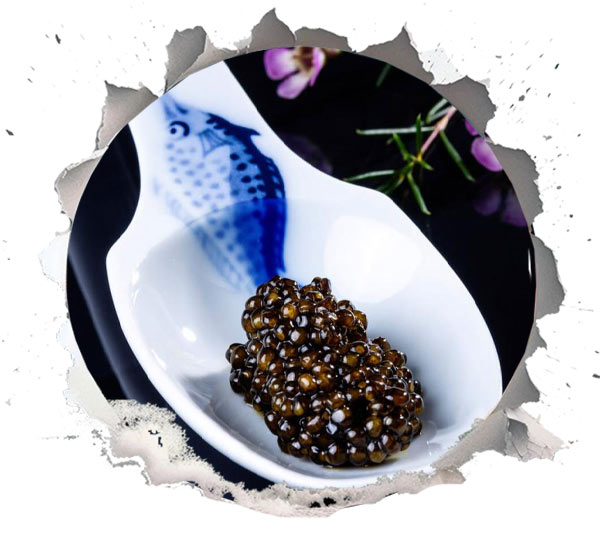Delightful Dining: Mastering How to Serve and Store Caviar

Caviar, the opulent delicacy made from fish eggs, commands respect. Its subtle flavour and delicate texture can be quickly ruined by mishandling and improper storage. This detailed guide will take you through the nuances of storing and serving caviar, ensuring that you serve caviar at its peak, whether it’s for a small gathering or a grand occasion.
Understanding Caviar: A Quick Primer
Before we explore storage and how to serve caviar, let’s take a quick look at what sets caviar apart. Caviar comprises the salted roe (eggs) of specific sturgeon species, primarily sourced from the Caspian Sea and the Black Sea. The quality of caviar hinges on various factors, including the sturgeon species, egg size and colour, and the salting process. Different caviar varieties offer distinct flavour profiles, ranging from subtle saltiness to rich, nutty undertones. For example, Ossetra caviar, famed for its nutty flavour and medium-sized eggs, is often seen as a mark of excellence. In contrast, Beluga caviar, with its large, pale eggs and buttery taste, commands the highest prices. Sevruga caviar, on the other hand, features smaller, firmer eggs with a mildly salty flavour.

The global caviar market stands as a multi-million-pound industry, with demand fluctuating due to factors such as availability, seasonal variations, and economic conditions. While obtaining precise figures is challenging because of the secretive nature of some caviar sourcing, estimates suggest an annual market size in the hundreds of millions of pounds. This highlights the critical importance of handling this precious commodity with the utmost care.
Selecting the Perfect Caviar
Before delving into the details of storing and serving caviar, it’s essential to choose the right type of caviar. Caviar is categorised according to the sturgeon species it comes from, with Beluga, Osetra, and Sevruga being among the most sought-after varieties. Each type of caviar offers a distinctive flavour and texture, with Beluga caviar celebrated for its large, opulent pearls and buttery taste, while Osetra caviar boasts a nutty and robust flavour. For more insights into this luxurious delicacy, consider exploring Iranian caviar, renowned for its exceptional quality and taste.
When choosing caviar for storage and to serve, opt for fresh caviar from reputable suppliers. Freshness plays a vital role in savouring the authentic essence of caviar, so ensure that the caviar you acquire is handled correctly and sourced from reliable origins.
How to Store Caviar to Serve It Perfectly?
Temperature is vital for preserving the quality and flavour of caviar. Inadequate temperature management can cause quick spoilage, leading to a decline in flavour, and texture, and the potential emergence of undesirable odours.
Optimal Storage Temperature: The ideal temperature range for keeping caviar fresh is between 28°F (-2°C) and 32°F (0°C). This cold environment slows down enzymatic processes, halting the degradation of proteins and fats that impact the caviar’s taste and consistency. Storing caviar at this temperature will notably extend its shelf life.
Storage Methods:
- Fridge: For short-term storage (up to a few days), the coldest part of your fridge, usually a dedicated crisper drawer, is appropriate. Make sure to tightly seal the caviar in its original packaging to prevent exposure to air and odours.
- Freezer: While freezing caviar is generally not recommended by connoisseurs due to potential changes in texture, it can be a suitable choice for longer storage if done correctly. Use a high-quality freezer bag for food storage, removing as much air as possible before sealing. Expect a slight texture alteration upon thawing. Always defrost the caviar in the fridge overnight.
- Specialised Caviar Storage: For ardent caviar fans, it’s wise to consider investing in a specialised caviar keeper. These containers maintain the optimal temperature range and often come with features to prevent the absorption of odours.
Key Point: Steer clear of storing caviar close to strongly aromatic foods like onions, garlic, or cheese, as the fragile eggs easily take on the smells around them.
How to Serve Caviar with Elegance?

The way caviar is presented significantly enhances the entire dining experience. Whether you’re throwing a grand dinner party or simply treating yourself, adhere to these tips of how to serve caviar with sophistication:
- Select the Right Accompaniments: Caviar pairs excellently with traditional sides like blinis, crème fraîche, chopped onions, and hard-boiled eggs. These accompaniments complement the rich and savoury taste of caviar.
- Serve Chilled: To retain the caviar’s freshness, present it chilled on a bed of crushed ice. This not only enhances the visual appeal but also maintains the caviar at an ideal temperature.
- Consider Portions: Caviar is a luxury to be enjoyed in small amounts. Offer caviar in modest servings to let the flavours stand out without overwhelming the palate.
- Choose Mother-of-Pearl or Wooden Utensils: When dishing out caviar, steer clear of metal utensils as they can affect the taste. Opt for mother-of-pearl or wooden utensils to preserve the delicate flavour of caviar.
Display: The way caviar is presented holds as much significance as its flavour. Utilise a chilled serving dish, ideally crafted from glass or porcelain. Lay out the caviar in a tidy, level layer, making sure not to stack it too high. Add a finishing touch of finely chopped herbs and lemon wedges for a touch of sophistication.
Serving Size: Caviar is most appreciated in modest portions. A standard serving is approximately one ounce (28 grams) per person. This quantity enables guests to relish the taste without feeling inundated.
We suggest that you explore our caviar recipes for improved inspiration on how to serve caviar flawlessly.
Serve in a Way to Keep the Freshness of Caviar
Even with proper storage, caviar has a limited shelf life. How long it remains fresh depends on the type of caviar and the storage conditions. Normally, unopened caviar can last for several months if stored correctly at the optimal temperature. Once opened, it should be consumed within a few days.
To prolong the freshness of opened caviar, make sure it is tightly sealed and placed in the coldest part of the fridge. You could also transfer the caviar to a smaller, airtight container to minimize exposure to air.
Conclusion
Caviar is a culinary masterpiece that demands careful handling. By adhering to the guidelines in this manual, you can ensure that every serving pays homage to its exceptional flavour and texture. From understanding the importance of temperature control to refining the art of presentation, the process of storing and serving caviar is a voyage that enhances the appreciation of this luxurious delicacy. Remember, paying attention to the details is crucial for unlocking the full potential of this exceptional food.

